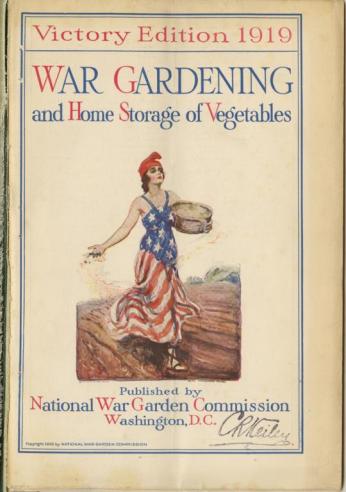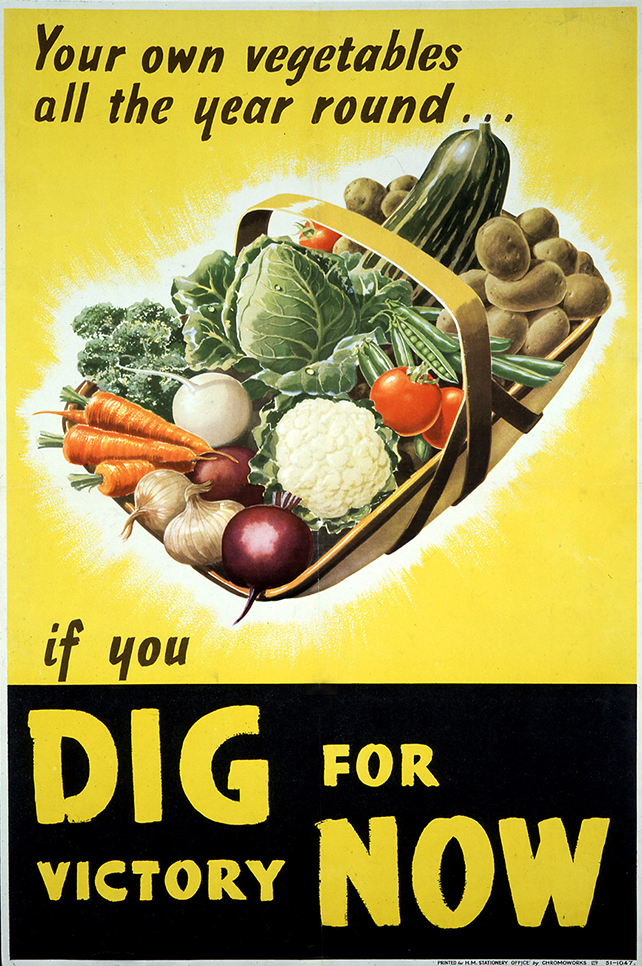Gardens That Were Planted To Produce More Food For The War Effort Were Called
People were able to do more than hunt for each days foodthey could travel trade and communicate. As part of the war effort the government rationed foods like sugar butter milk cheese eggs coffee meat and canned goods.

Chickens Backyard Keeping Chickens Chickens
Its primary use was in the production of rope and for linen which was the Egyptians principal material for making their.

Gardens that were planted to produce more food for the war effort were called. While they were popular at the time it was during the Second World War that the idea really caught on. The British created a civilian program called the. Victory Gardens also called war gardens or food gardens for defense were gardens planted both at private residences and on public land during World War I and World War II to reduce the pressure on the public food supply brought on by the war effort.
The more produce that could be grown by Canadians the more railcars and transport trucks were free to move goods other than food. In 1944 an estimated 209200 victory gardens were. Victory gardens also called war gardens or food gardens for defense were vegetable fruit and herb gardens planted at private residences and public parks in the United States United Kingdom Canada Australia and Germany during World War I and World War II.
They visited the lonely and the sick and listened to their fears and worries. The stem of the plant was used to make boats mats and paper. When you grow your own food you savor it more because of the effort it took to get to the table.
They wrote letters of support and caring. Backyard gardening can inspire you to take an interest in the origins of your food and make better choices about what you put on your plate says Dr. Victory gardens were widely planted in the United States UK Canada and Australia during World War I and again when World War II broke out a few years later.
The roots of the plant were eaten as food but it was primarily used as an industrial crop. The term victory garden was first popularised overseas in the United States and the United Kingdom and started being used in Australia after then-prime. By 1943 it was estimated that home gardens were producing over one million tons of produce and by 1945 around 75 of food consumed in Britain was produced in Britain.
During World War II Victory Gardens were planted by families in the United States the Home Front to help prevent a food shortage. - papyrus plant that grew abundantly along the Nile river in Egypt. Victory gardens were initially a military effort started during World War I.
This rare book 1919 about the USA food gardening program during World War I is being republished chapter by chapter on the Internet. - major accomplishment in Egyptian record-keeping and communications. The plots known as victory gardens were a form of material mobilization.
Less breakable - Egyptian were able to process the plant in order to produce thin sheets on which one could write down things. By the end of World War I the campaign promoting home gardenswhich by then were referred to as victory gardenshad dropped off but many people continued to maintain them. Lighter and thinner than clay tablets.
The worlds first villages and cities were built near fields of domesticated plants. The gardens used along with rationing cards and stamps helped to prevent food shortages and freed up. Overall the campaign was a massive success.
Labor and transportation shortages made it hard to harvest and move fruits and vegetables to market. They planted victory gardens with extra vegetables. Helen Delichatsios an internist at Harvard-affiliated Massachusetts General Hospital.
The United States government strongly encouraged everyone to plant a garden to provide their own food so that food transportation and other. People were urged to plant gardens in rural and urban settings to offset the food rations add vitamins to their diet and support the war effort. But women were not paid as well as men.
In wartime governments encouraged people to plant victory gardens not only to supplement their rations but also to boost morale. So the government turned to its citizens and encouraged them to plant Victory Gardens. Agricultural workers and farmers in America and Europe were enlisted to fight in the war.
The campaign was still kept up after the war in order to free up food to feed the starving populations of Europe. It is also part of a long history of growing food on the White House grounds. They bought liberty bonds.
The USDA encouraged people throughout WWII to grow their produce in family and community gardens known as victory gardens. The National Victory Garden Program which was created by the War Food Administration in 1941 got early and strong support from corporations. The garden has provided fresh seasonal produce for the First Family guests at White House events and for those in need in the local community.
People were told that their efforts would help assure victory since the gardens would allow more supplies to go to the war effort. Plant domestication also led to advances in tool production. This meant food for everyone.
Flax was another important industrial crop that had several uses. They joined sewing groups and sewed clothes and uniforms. It is the first major vegetable garden at the White House since Eleanor Roosevelts victory garden during World War II.

Liberty Gardens 1917 1919 Mnopedia

Wartime Victory Gardens Were Popular Food Source Except In Waterloo Region Cbc News

Gardens Have Pulled America Out Of Some Of Its Darkest Times We Need Another Revival Mother Jones

Lollo Rossa Lettuce 53 Days In 2021 Lettuce Seeds Plant Problems Organic Seeds

Komentar
Posting Komentar